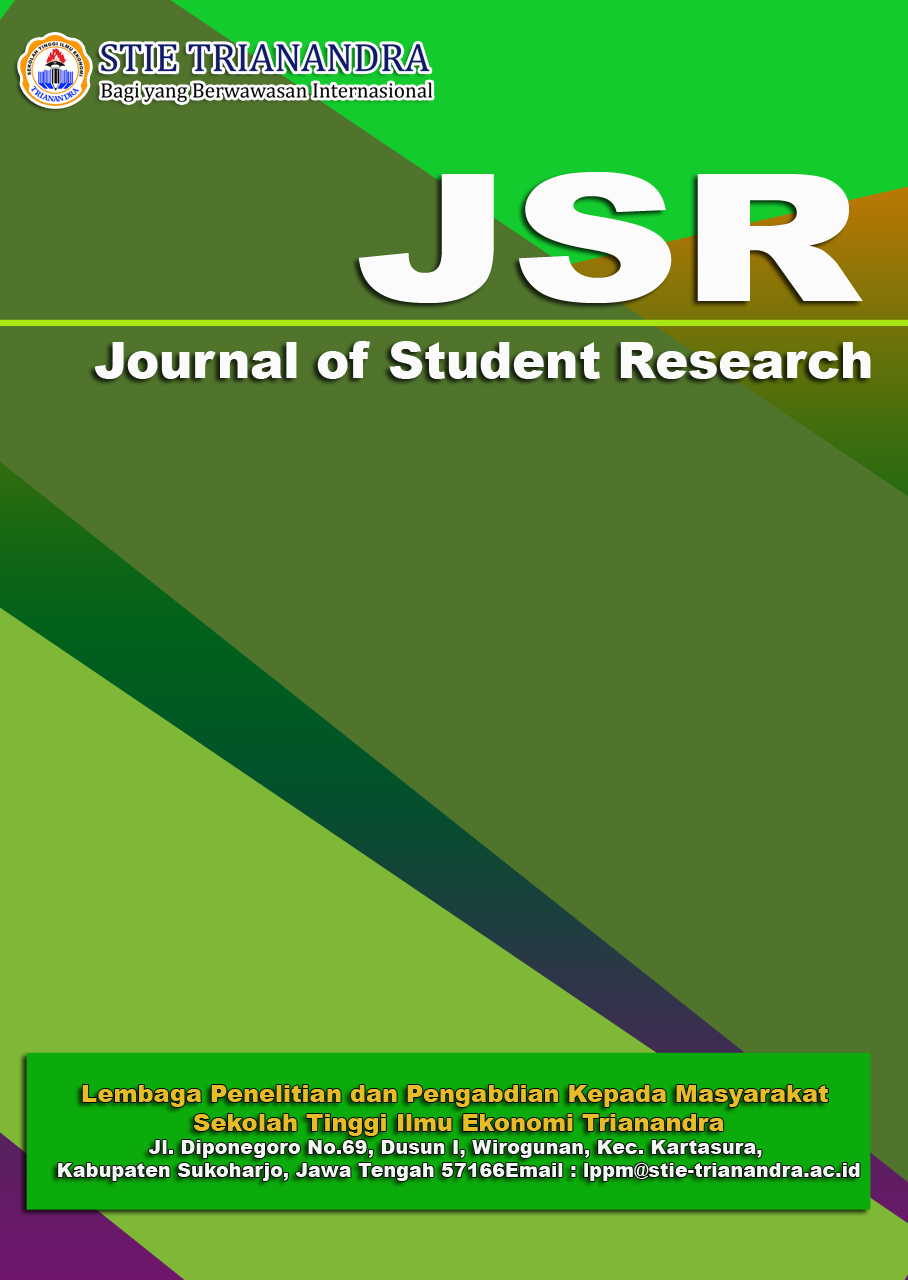Evaluasi Layanan Referensi Perpustakaan Universitas Bung Hatta
DOI:
https://doi.org/10.55606/jsr.v2i2.2839Keywords:
Evaluation, Reference Services, Library, CIPPAbstract
The aim of this research is to describe the evaluation of reference services which is then seen from the CIPP Evaluation Model theory. This type of research is quantitative with descriptive methods. The variable in this research is library reference services with sub variables, namely library service evaluation using the CIPP evaluation model. The population in this study is visitors to reference services at the Bung Hatta University Library from January 2023 to November 2023 with sampling using the non-probability silling formula with an accidental sampling technique. The number of samples is 61 users. The main instrument used is a research questionnaire which has been tested for validity and reliability. Data collection was carried out through questionnaires. The data were analyzed through the stages of examination, tabulation, and drawing conclusions. The results of the research are First, in the evaluation of the context, namely the reference service function, there are 3 statements which have an average score of 3.11. This score is on a scale of 2.50-3.24 which means good. Second, in the input evaluation there are 3 sub-indicators, (1) librarian which consists of 4 statements and has an average score of 3.24. This score is on a scale of 2.50-3.24 which means good; (2) a collection consisting of 5 statements and having an average score of 3.24. This score is on a scale of 2.50-3.24 which means good; (3) a catalog consisting of 3 statements and having an average score of 3.09. This score is on a scale of 2.50-3.24 which means good. Third, in the evaluation process there are 2 sub-indicators, (1) library reference services which consist of 5 statements and have an average score of 3.25. This score is on an interval scale of 3.25-4.00 which means very good; (2) information search service which consists of 3 statements and has an average score of 3.16. This score is on a scale of 2.50-3.24 which means good. Fourth, in product evaluation there are 2 sub-indicators, (1) visitor data which consists of 3 statements and has an average score of 3.20. This score is on a scale of 2.50-3.24 which means good; (2) the level of user satisfaction which consists of 3 statements and has an average score of 3.20. This score is on a scale of 2.50-3.24 which means good.
References
Himayah. (2021). Perkembangan Katalog di Perpustakaan Pascasarjana Universitas Islam Negeri Raden Fatah Palembang. Jurnal Perpustakaan, 12(1), 76–84.
Istiana, P. (2014). Layanan Perpustakaan. Yogyakarta: Ombak.
Lasa Hs. (2019). Kualitas Pelayanan Perpustakaan Daerah Kabupaten Subang. Jurnal Ilmiah Ilmu Administrasi Negara, 6(4), 280–288.
Mustika, P. (2017). Profesionalisme Pustakawan. Buletin Perpustakaan, (57), 27– 36.
Priadana, M.S., dan Denok, S. (2021). Metode Penelitian Kuantitatif. Tanggerang: Pascal Books.
Rizki, J. (2013). Optimalisasi Fungsi Perpustakaan Perguruan Tinggi Melalui Peran Pustakawan. Al-Kuttab: Jurnal Perpustakaan dan Informasi, 105-117.
Stufflebeam, D. L. (2000). The CIPP model for evaluation. In Evaluation models: Viewpoints on educational and human services evaluation (pp. 279-317). Dordrecht: Springer Netherlands.









